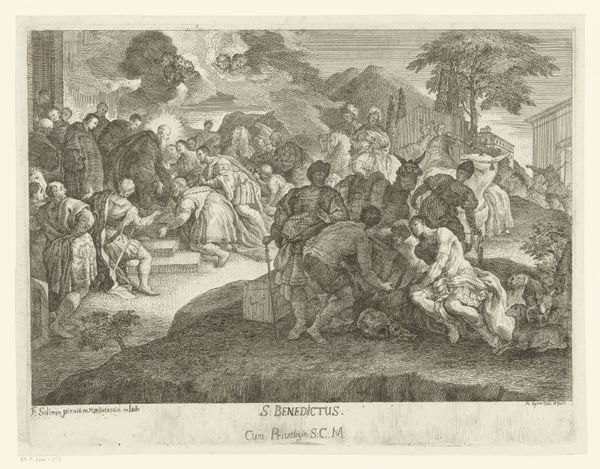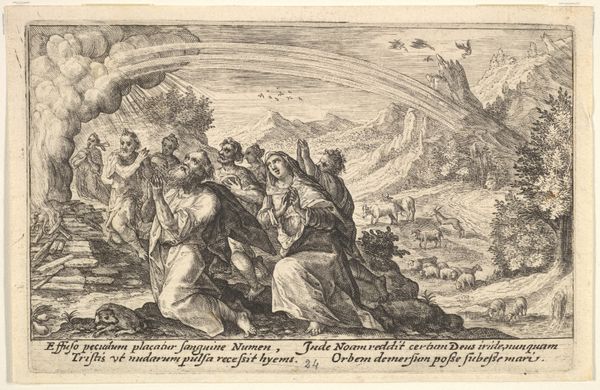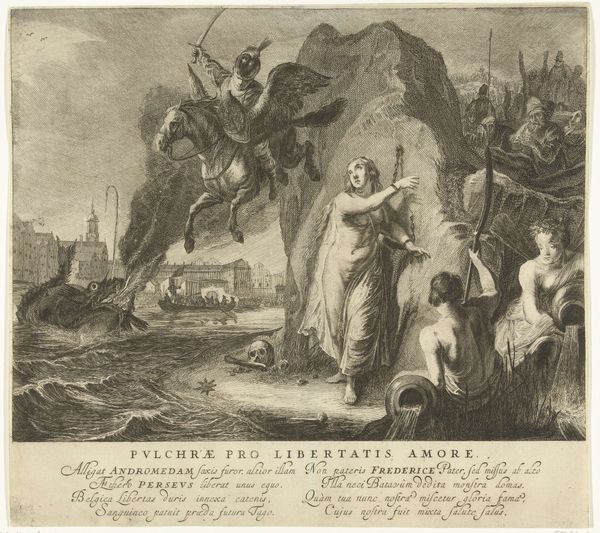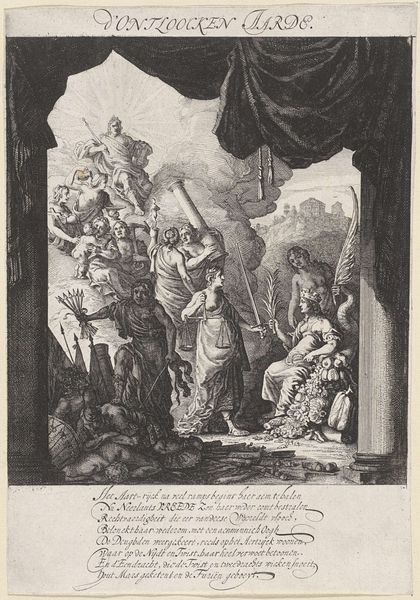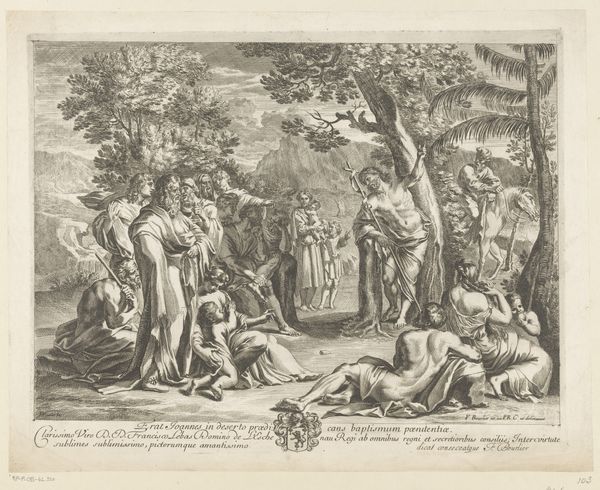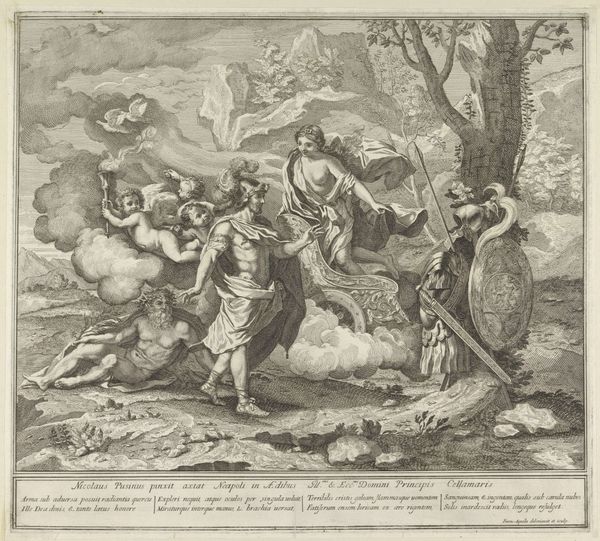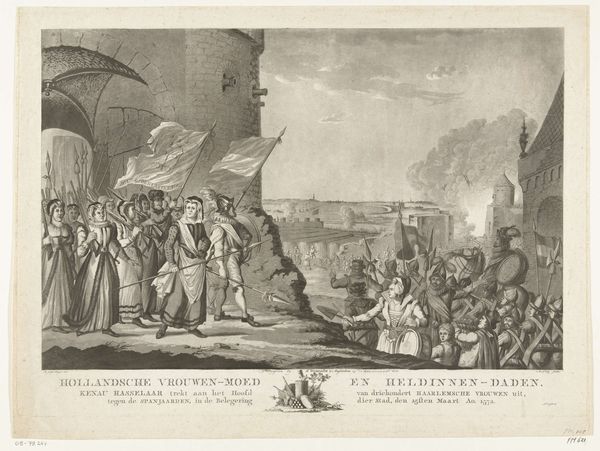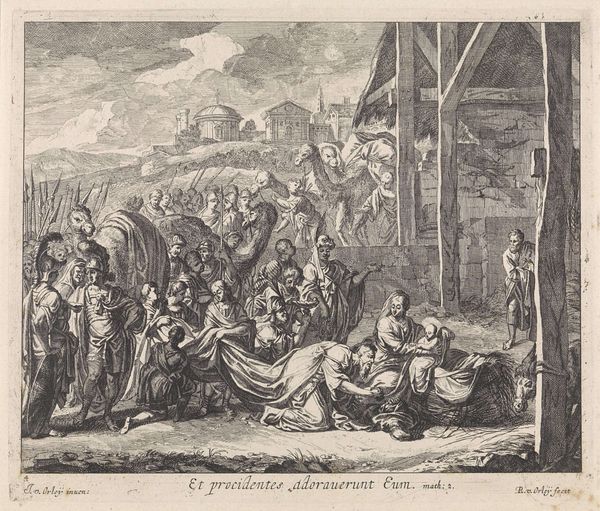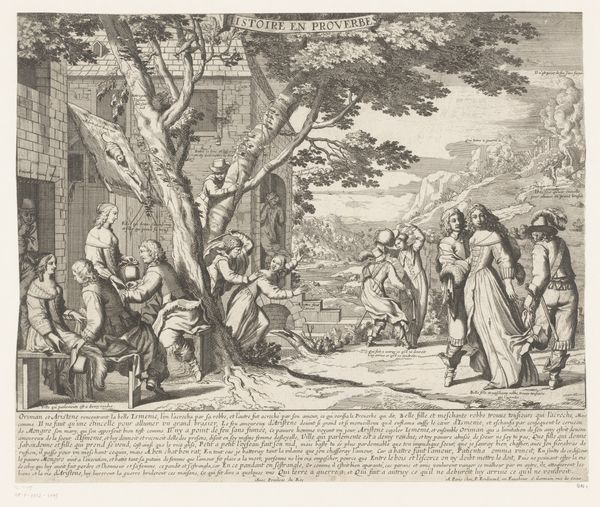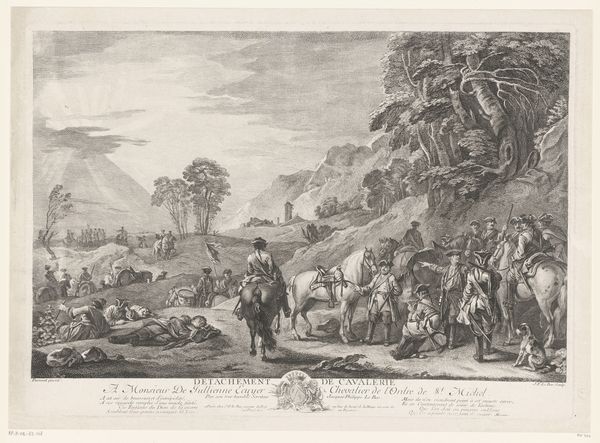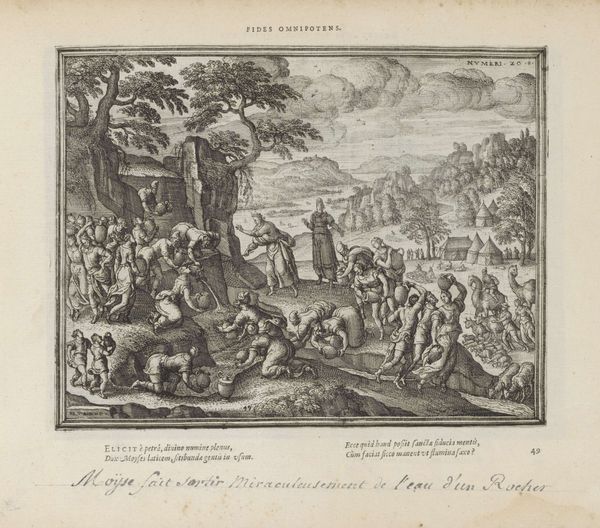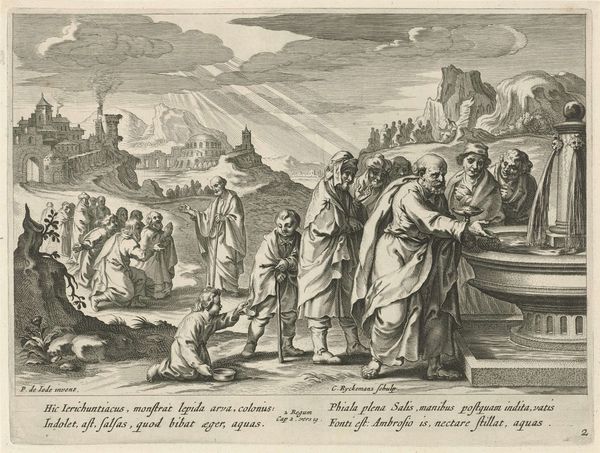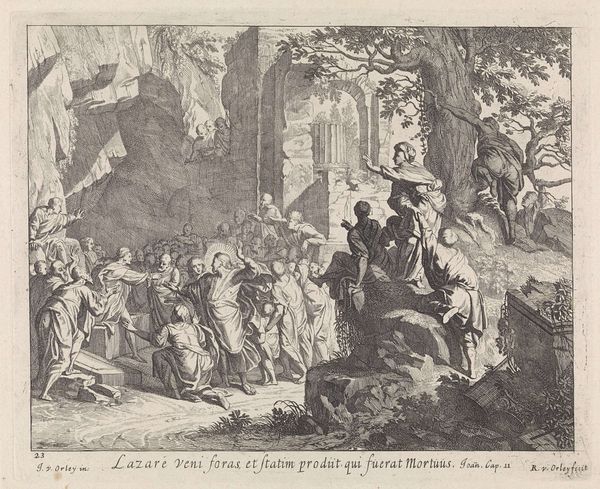
print, engraving
#
allegory
#
baroque
# print
#
old engraving style
#
figuration
#
group-portraits
#
line
#
history-painting
#
engraving
Dimensions: height 354 mm, width 386 mm
Copyright: Rijks Museum: Open Domain
Curator: Editor: Here we have Pieter Nolpe's engraving, "Tableau vivant met het huwelijk van Peleus en Thetis," from 1642. The sheer number of figures and the line work is striking, creating a crowded, almost chaotic scene. It’s quite different from other Baroque art I’ve seen. What stands out to you? Curator: The fascinating aspect lies in the engraving process itself. Consider the labour invested in the precise, repetitive act of carving those lines into a metal plate. Look closely at the varying densities – notice how they build form and volume. It’s a commercial undertaking, producing multiples of images for wider consumption, a very different social purpose to an oil painting commissioned by the elite. Do you see how this impacts its status? Editor: That’s a great point! I hadn't thought about it that way. So, the printmaking process itself is key to understanding its role and value in society, moving it away from "high art." But what about the subject matter; the marriage? Is that secondary? Curator: Not entirely, but think about it from the perspective of Nolpe and his audience. The mythological marriage is merely the pretense. It is a symbolic structure for communicating something far more pointed. Can you imagine why, in 1642, with all the unrest, that producing an image which hints at celebrating a dynastic alliance is particularly relevant and useful for those who commissioned and distributed this print? Who benefits? Editor: That connection hadn’t occurred to me, but now I see it! The act of creating and distributing this print transforms the narrative into a tool for bolstering a particular social and political order. It definitely changes how I appreciate the work. Curator: Precisely! We are not simply looking at a depiction of a mythological scene, but examining how materials, labour, and the social context intersect to give this artwork its particular meaning and value. Editor: That's fascinating. I’ll definitely look at art differently now, considering not just what's *in* the image, but the entire process of its creation and distribution. Thanks! Curator: My pleasure. It’s always rewarding to examine art through the lens of its material existence and its societal function.
Comments
No comments
Be the first to comment and join the conversation on the ultimate creative platform.
